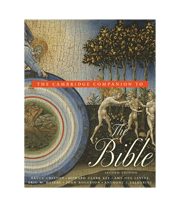Introduction
Published online by Cambridge University Press: 28 May 2012
Summary
PREFACE
No other book has exerted the depth and range of influence that the Bible has. Judaism and Christianity both claim the Bible in different forms as their own, but other religious sources – most notably the Qur'an – as well as literary works from Chaucer to Dostoyevski develop much of its force and content. The Bible tells the story of God's people, shapes their identity through prophecy, and informs their understanding with a rich variety of writings. The Torah (or “Law”), the Prophets, and the Writings are the three main divisions of the Hebrew Bible. Christians recognize as the Bible not only the Scriptures of Israel but also twenty-seven documents that describe or that derive from the persons and events that gave rise to faith in Jesus. Christians designate this second group as “the New Testament” and refer to Israel's writings as “the Old Testament.”
In addition to the writings included in the canons of the Bible, there are a number of writings that some communities, past and present, have regarded as of equal value, or as essential supplements to the biblical sources. The Wisdom of Solomon and 1 and 2 Maccabees, for example, appear in some Christian Bibles, and the Book of Enoch acquired the authority of a sacred text at Qumran. Many early churches used Gospels other than the four now found in the New Testament.
- Type
- Chapter
- Information
- The Cambridge Companion to the Bible , pp. 1 - 38Publisher: Cambridge University PressPrint publication year: 2007

